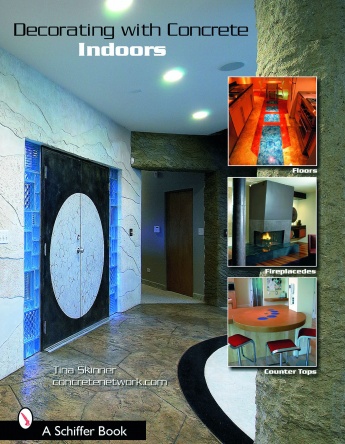
Last month, we reviewed the effects of moisture on underlayment in residential remodel situations, as well as considerations of storage, the importance of acclimating underlayment panels before installation, and the proper methods for fastening, sanding the joints and adhesive application. The emphasis was on moisture either in the underlayment or introduced from the surface.
However, in new construction, moisture can come from not only the surface but also underneath. In these cases, the moisture is just waiting for the resilient installation to take place to rear its ugly head. This situation affects conventional full spread and modified loose-lay installations alike.
In most new construction projects, moisture can be introduced into the structure in various ways. These include: concrete foundations of one cubic foot, which equates to three pints of water per cubic foot; a 4” thick concrete slab at 25’ by 40’ (or 1000 sq. ft.), which means 250 gallons of water/a quart per sq. ft.; and plaster walls, at one quart of water per sq. ft.
Other pathways for moisture can include: the wall texture (light), at 4 oz. of water per sq. ft. (or 32 sq. ft. per gallon); wall texture (heavy), at 8 oz. of water per sq. ft.(or 16 sq. ft. per gallon); house wraps designed for energy efficiency, which can also hold in moisture; most temporary heating devices for propane and heating oil types; dimensional lumber that is surface-dried rather than kiln-dried; and wet crawl spaces.
Considerations also include paint, taping compounds, spills, high humidity and construction delays due to rain. Even if most of the moisture is allowed to evaporate if adequate ventilation is provided, a small percentage can still be absorbed into the subfloors, sheathing, studs and joists.
Until the change from plywood sheathing to either oriented strand board or waferboard sheathing, the moisture could pass through the plywood sheathing, but reconstituted wood types of sheathing have retarded the moisture migration. Additionally, the slowing of moisture migration with house wraps has created such a low permeability factor that almost no moisture escapes through the walls. Add to this aluminum foil covered insulation, which has zero permeability, and you have almost completely stopped moisture.
In some damp and high humidity climates there are growing reports of mold and mildew growth on the interior walls of new homes due to trapped moisture, which can create indoor air quality problems. With no moisture migrating through the walls, the only place left for moisture to migrate is through the floors and ceilings. (Resilient flooring products work as an effective vapor retarder.)
Moisture migration
Moisture migration is determined by two factors: Humidity and temperature. Moisture vapor travels toward equalization, or from a high humidity to a low humidity; temperature is the more critical factor. The warmer the temperature, the more moisture that air can hold. What this means is that heat will start the moisture to migrate.
This does not mean temporary heat. The combustion process of burning fuels in portable heaters will add moisture to the room. For example, for each gallon of heating oil burned, almost a gallon of water is produced, and for each 20 pounds of propane burned, three gallons of water are produced. This means that once the permanent heat is on, the major moisture migration begins. Unfortunately, all too often the underlayment is installed and often so is the resilient floor covering.
Imagine a crawl space that is cold (50 degrees Fahrenheit) and damp (100 percent relative humidity), and a subfloor and joist system with a moisture content of 20 percent or greater. Over the subfloor is a builder kraft paper (if used) between the subfloor and underlayment (kraft paper will barely slow moisture migration), then an underlayment with a moisture content between 8 and 11 percent. With the temperature at 50 degrees Fahrenheit there will be little or no migration of moisture.
However, turn on the heat to a temperature of 65 degrees Fahrenheit and a relative humidity of about 65 percent and then install a sheet vinyl fully-adhered. The moisture migration will start to move up from the crawl space, through the subfloor, through the kraft paper and into the underlayment until it hits the surface of the sheet vinyl. The moisture will start to accumulate and under severe conditions condensates. As the moisture accumulates, the underlayment will start to expand. The first indication of expansion is the underlayment joints will start to push up the filler, or the underlayment joints will start to peak and, in severe cases, buckle, pulling the fasteners through the underlayment.
In discussing this problem with other trades I have discovered there is also a higher incidence of joint show-through in the roofing industry, especially on structures with composition roofing. The next time you are in a new housing development look for this problem.
Solving the problem
Combating these problems means ensuring builders are aware of them. Some of the things that can be done to eliminate this dilemma are:
- Place a plastic ground cover in the crawl space to slow the migration of moisture from the soil.
- Use ventilation to remove excess moisture from the building during the construction process, especially after the structure is closed up. It can be as simple as placing a box fan in the crawl space access, to force the moist air out through the crawl space vents.
- Use dry heat in the structure before the installation of the underlayment.
- Conduct thorough moisture testing to ensure there is no moisture variation between the underlayment and subfloor; they should not exceed a 3 percent difference.
- Eliminate the patching of underlayment joints. Sand to smooth and only patch the joints that are necessary.
- Allow a longer period of time between the installation of the underlayment and the installation of the resilient floor covering. Allow the underlayment to draw any moisture from the subfloor
- Install a moisture barrier between the subfloor and the underlayment. In the past a manufacturer of underlayment used to specify a 4-mil polyethylene vapor retarder beneath the underlayment, not to stop the movement of moisture but to slow the moisture movement. The APA recommends that no more than 85 percent of a floor level be covered with a vapor retarder.








